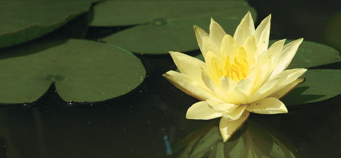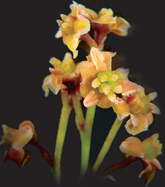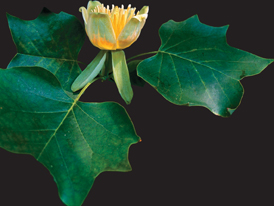The great majority of plant species—over 260,000—are angiosperms.

Water lilies are aquatic plants that produce flowers and leaves, which float on the surface of the water.
AMBORELLA
Amborella does not represent a group of plants but instead just a single species found only on the island of New Caledonia in the South Pacific Ocean. DNA studies show that Amborella is equally separated from all other flowering plants living today, suggesting that it is descended from plants that split off from the main line of flowering plant evolution as long ago as 100 million years.

The flowers of Amborella trichopoda are simpler than those of most other plants, and the species has a number of features that place it at the very base of flowering plant evolution.
NYMPHAEACEAE: Water lilies
About 50 species of water lilies are known, and they are of special interest to plant taxonomists. Their DNA and flower structure suggest that they are, along with Amborella, one of the earliest groups to have split off from the main line of flowering plant evolution. Examples of water lilies are found throughout the world.
MAGNOLIIDS: Magnolia trees and others
The most famous genus of these plants is Magnolia, which includes nearly 200 species. Laurels and tulip poplars are also magnoliids (mag NOH lee ids). Because of their flower structure, magnoliids were once thought to be nearly as primitive as water lilies. Genetic studies now suggest that they split off from the rest of the angiosperm line after monocots and, therefore, do not represent the earliest flowering plants.

The Tulip Poplar is a long, straight tree often used as wood for telephone poles. Its flowers are greenish and shaped like tulips.

Magnolia trees produce conspicuous flowers, which contain multiple stamens and multiple pistils.
Table of Contents
- Formulas and Equations
- Applying Formulas and Equations
- Mean, Median, and Mode
- Estimation
- Using Measurements in Calculations
- Effects of Measurement Errors
- Accuracy
- Precision
- Comparing Accuracy and Precision
- Significant Figures
- Calculating With Significant Figures
- Scientific Notation
- Calculating With Scientific Notation
- Dimensional Analysis
- Applying Dimensional Analysis




